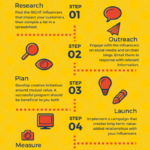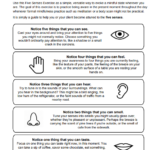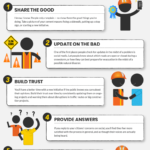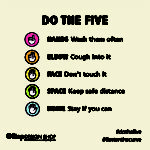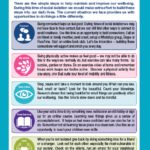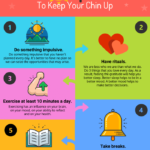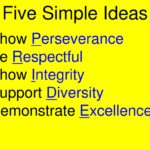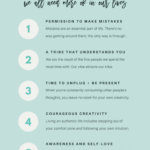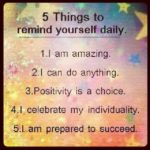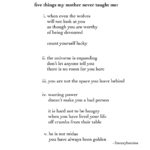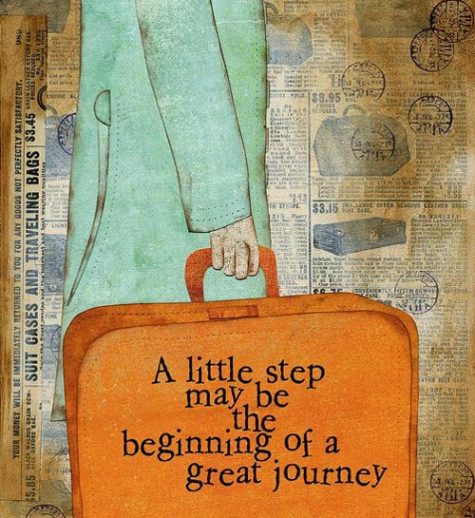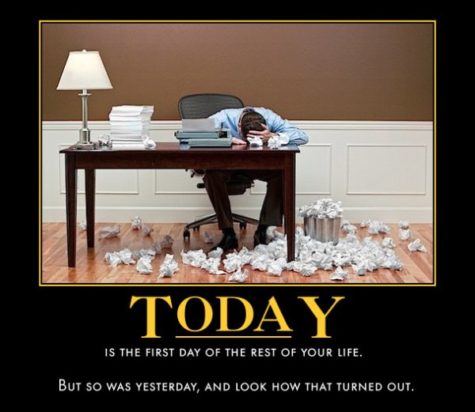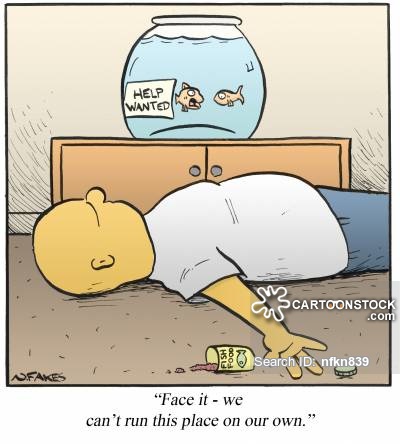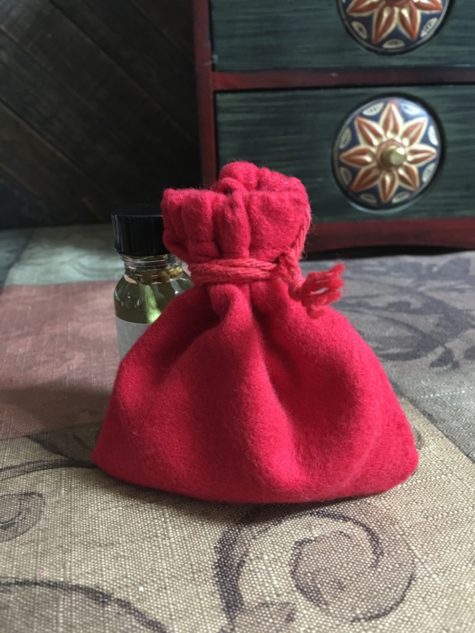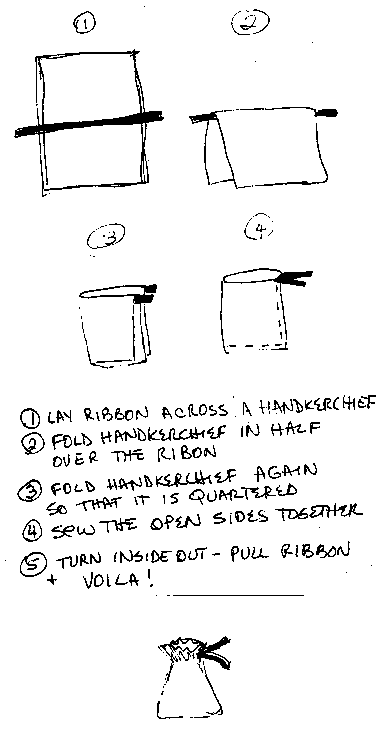How To
More Five Things
According to the countdown widget in the side bar, we have 12 days left in our current project. It’s been such a simple idea that I am finding it hard to come up with something to talk about every day. So, today I asked Google for inspiration, guidance, something to talk about…
Wow! I discovered way more than I expected! I found so much stuff in my search, that I decided our Five Simple Things project wouldn’t be complete if we didn’t have a comprehensive list of all the other Five Things one might do. So here you go!
How To Make A Bed
Walking On Water
I found this article at Mark and Angel, and it intrigued me quite a bit. I’m not sure that I agree with him, and I’m not even sure if it’s a true story or not. It did, however get me thinking about how my belief system affects my outcomes. So, here it is:
This past Sunday I was relaxing at the water’s edge of a local beach when a young boy ran full speed right by me and into the shallow surf. He continuously hopped up and down as he was running forward, kicking his little legs in the air and across the surface of the water before inevitably falling face-first into the waves. He got back up and repeated this act several times, each time with more determination than the previous attempt. It became obvious that he was trying to run across the surface of the water. I couldn’t help but to laugh. His combined levels of determination and exertion were priceless.
After several attempts, he noticed my laughter and walked over to me. “What’s so funny?” he asked.
“You remind me of me, and it makes me smile.” I said.
“Do you know how to walk on water?” he asked. “Like a superhero?”
“Well, I think I can help you out.” I said. “Let me give you a few pointers.”
Curious, the boy sat down on the sand next to me. His mother scurried over, worried… but I reassured her that her son wasn’t bothering me. Relieved, perhaps, to have her son sitting safely on the sand instead of flying face-first through the air, she went back to her beach chair 20 feet away and continued a conversation with another lady.
“So, you want to walk on water, eh?” I asked. He nodded his head anxiously.
A Rough Summary of What I Told Him
- Make sure you were born to walk on water.
You must follow your heart, and be who you were born to be. Some of us were born to be musicians… to communicate intricate thoughts and rousing feelings with the strings of a guitar. Some of us were born to be poets… to touch people’s hearts with exquisite prose. Some of us were born to be entrepreneurs… to create growth and opportunity where others saw rubbish. And still, some of us were born to walk on water… to invent the capability of doing so. If you’re going to walk on water, you better feel it in every fiber of your being. You better be born to do it!
- Decide that nothing can stop you.
Being born to walk on water isn’t enough by itself. We must each decide to accept our calling. Unfortunately, most of us make excuses instead. “But I might drown trying,” we say. Or, “But I have a family to think about first.” Walking on water, or doing anything that hasn’t been done before, requires absolute, unconditional dedication. The only person who can control your level of dedication is you. If you’re serious about walking on water, you must decide that nothing… not gravity, not a group of naysayers, NOTHING… can stop you!
- Work on it for real.
While many of us decide at some point during the course of our lives that we want to answer our calling… to accomplish our own version of walking on water, only an astute few of us actually work on it. By “working on it”, I mean truly devoting oneself to the end result. The rest of us never act on our decision. Or, at best, we pretend to act on it by putting forth an uninspired, half-ass effort. But to truly walk on water, you’ll have to study physics, rheology, hydrophobic substances, etc… and then you’ll have to define and redefine next-generation theories and complex hypotheses, which must be tested relentlessly. When the tests fail, you must be ready to edit your theories and test them again. This kind of work, the real kind, is precisely what enables us to make the impossible possible.
- Let the whole world know what you’re up to.
When you’re trying to walk on water, or do anything that nobody else has done before, life can get lonely pretty quickly. To keep your motivation thriving, it’s important to let others know that you’re attempting to defeat the formerly impossible. Don’t be shy! Let the whole world know that you’re trying to walk on water. No doubt, it’ll place a bit of extra pressure on your back, and you’ll almost certainly hear some laughter in the crowd. But this kind of pressure fuels motivation, which is exactly what you’ll need to accomplish such a colossal undertaking. And when you finally do succeed, the last bit of laughter heard will be your own.
- Value the people who value your ambitions.
When most people hear about your “mission impossible” aspirations, their natural reaction may be to roll their eyes, call you crazy, and tell you to quit being foolish. But fortunately, the world is also inhabited by pioneers and believers who see the value in your dreams. These people understand that achieving the formerly impossible is one of the greatest gifts human beings possess. They’ll likely give you tips, bits of assistance, and the extra push you need to succeed. These are extraordinary people, and you’ll want to surround yourself with them, because they will ultimately assist you over the hurdles and across the surface of the water. Think of them as an influential, personal support team. Without them, walking on water will be a far more difficult feat, if not completely impossible.
- Ignore the negative naysayers.
No matter how much progress you make, there will always be the people who insist that walking on water is impossible, simply because it hasn’t been done before. Or they may incessantly suggest that the idea as a whole is utterly ridiculous because nobody really cares about walking on water anyways. When you come across these people, don’t try to reason with them. Instead, forget that they exist. They will only waste your time and energy.
- Prepare yourself for the pain.
Even though you’re no longer mindlessly running face-first into the oncoming ocean surf, but instead forming complex theories based on the studies of rheology and fluid viscosity, it doesn’t mean you won’t experience your fair share of pain. You’re in the business of walking on water, of doing something that has never been done before. You’ll likely get a waterlogged, lungful of water on a regular basis. But the pain will seem like a small price to pay when you become the first person to jog across the rapids of the Mississippi.
- Enjoy the pain of your greatest challenge.
Superheroes aren’t real. In real life nobody has ever walked on water. But lots of people have achieved formerly impossible feats, and continue to enjoy the possibilities of new challenges. These people will all tell you there’s nothing more gratifying than the thrill of your greatest challenge. The inherent pains along the way are simply mile markers on your trip to the finish line. When you finally do finish, you may actually find yourself missing the daily grind. Ultimately, you’ll realize that pleasure and pain can be one and the same.
- Never give up! Never quit!
The reason nobody has walked on water isn’t because people haven’t tried. Remember, you just tried several times in a row, and I’m sure many others have too. The reason nobody has succeeded is, simply, that within the scope of modern science and physics, it’s currently impossible. But this doesn’t mean that with your help it won’t become possible in the future. If you were born to do it and truly dedicate yourself to the end result, anything, including walking on water, is entirely possible!
Just a Chance
When we were done talking, the young boy got up and ran back over to his mother. He pointed over to me and I smiled and waved back. Then he said to her, “Mommy, mommy! That guy just taught me how to walk on water!”
A few moments later she walked over to scold me for supposedly giving out reckless advice. She told me I was giving her son a false sense of hope. I told her all I was giving him was a chance.
When You’re in a Slump
From Zen Habits, we have this article by Leo Babuata:
Get Off Your Butt: 16 Ways to Get Motivated When You’re in a Slump
Even the most motivated of us — you, me, Tony Robbins — can feel unmotivated at times. In fact, sometimes we get into such a slump that even thinking about making positive changes seems too difficult.
But it’s not hopeless: with some small steps, baby ones in fact, you can get started down the road to positive change.
Yes, I know, it seems impossible at times. You don’t feel like doing anything. I’ve been there, and in fact I still feel that way from time to time. You’re not alone. But I’ve learned a few ways to break out of a slump, and we’ll take a look at those today.
This post was inspired by reader Roy C. Carlson, who asked:
“I was wondering if you could do a piece on why it can be hard for someone to change direction and start taking control of their life. I have to say I’m in this boat and advice on getting out of my slump would be great.”
Roy is just one of many with a slump like that. Again, I feel that way sometimes myself, and in fact sometimes I struggle to motivate myself to exercise — and I’ll use that as an example of how to break out of the slump.
When I fall out of exercise, due to illness or injury or disruption from things going on in my life, it’s hard to get started again. I don’t even feel like thinking about it, sometimes. But I’ve always found a way to break out of that slump, and here are some things I’ve learned that have helped:
One Goal.
Whenever I’ve been in a slump, I’ve discovered that it’s often because I have too much going on in my life. I’m trying to do too much. And it saps my energy and motivation. It’s probably the most common mistake that people make: they try to take on too much, try to accomplish too many goals at once. You cannot maintain energy and focus (the two most important things in accomplishing a goal) if you are trying to do two or more goals at once. It’s not possible — I’ve tried it many times.
You have to choose one goal, for now, and focus on it completely. I know, that’s hard. Still, I speak from experience. You can always do your other goals when you’ve accomplished your One Goal.
Find inspiration.
Inspiration, for me, comes from others who have achieved what I want to achieve, or who are currently doing it. I read other blogs, books, magazines. I Google my goal, and read success stories. Zen Habits is just one place for inspiration, not only from me but from many readers who have achieved amazing things.
Get excited.
This sounds obvious, but most people don’t think about it much: if you want to break out of a slump, get yourself excited about a goal. But how can you do that when you don’t feel motivated? Well, it starts with inspiration from others (see above), but you have to take that excitement and build on it.
For me, I’ve learned that by talking to my wife about it, and to others, and reading as much about it as possible, and visualizing what it would be like to be successful (seeing the benefits of the goal in my head), I get excited about a goal. Once I’ve done that, it’s just a matter of carrying that energy forward and keeping it going.
Build anticipation.
This will sound hard, and many people will skip this tip. But it really works. It helped me quit smoking after many failed attempts. If you find inspiration and want to do a goal, don’t start right away. Many of us will get excited and want to start today. That’s a mistake.
Set a date in the future — a week or two, or even a month — and make that your Start Date. Mark it on the calendar. Get excited about that date. Make it the most important date in your life. In the meantime, start writing out a plan. And do some of the steps below. Because by delaying your start, you are building anticipation, and increasing your focus and energy for your goal.
Post your goal.
Print out your goal in big words. Make your goal just a few words long, like a mantra (“Exercise 15 mins. Daily”), and post it up on your wall or refrigerator. Post it at home and work. Put it on your computer desktop. You want to have big reminders about your goal, to keep your focus and keep your excitement going. A picture of your goal (like a model with sexy abs, for example) also helps.
Commit publicly.
None of us likes to look bad in front of others. We will go the extra mile to do something we’ve said publicly. For example, when I wanted to run my first marathon, I started writing a column about it in my local daily newspaper. The entire island of Guam (pop. 160K) knew about my goal. I couldn’t back down, and even though my motivation came and went, I stuck with it and completed it.
Now, you don’t have to commit to your goal in your daily newspaper, but you can do it with friends and family and co-workers, and you can do it on your blog if you have one. And hold yourself accountable — don’t just commit once, but commit to giving progress updates to everyone every week or so.
Think about it daily.
If you think about your goal every day, it is much more likely to become true. To this end, posting the goal on your wall or computer desktop (as mentioned above) helps a lot. Sending yourself daily reminders also helps. And if you can commit to doing one small thing to further your goal (even just 5 minutes) every single day, your goal will almost certainly come true.
Get support.
It’s hard to accomplish something alone. When I decided to run my marathon, I had the help of friends and family, and I had a great running community on Guam who encouraged me at 5K races and did long runs with me.
When I decided to quit smoking, I joined an online forum and that helped tremendously. And of course, my wife Eva helped every step of the way. I couldn’t have done these goals without her, or without the others who supported me. Find your support network, either in the real world or online, or both.
Realize that there’s an ebb and flow.
Motivation is not a constant thing that is always there for you. It comes and goes, and comes and goes again, like the tide. But realize that while it may go away, it doesn’t do so permanently. It will come back. Just stick it out and wait for that motivation to come back. In the meantime, read about your goal (see below), ask for help (see below), and do some of the other things listed here until your motivation comes back.
Stick with it.
Whatever you do, don’t give up. Even if you aren’t feeling any motivation today, or this week, don’t give up. Again, that motivation will come back. Think of your goal as a long journey, and your slump is just a little bump in the road. You can’t give up with every little bump. Stay with it for the long term, ride out the ebbs and surf on the flows, and you’ll get there.
Start small. Really small.
If you are having a hard time getting started, it may be because you’re thinking too big. If you want to exercise, for example, you may be thinking that you have to do these intense workouts 5 days a week. No — instead, do small, tiny, baby steps. Just do 2 minutes of exercise. I know, that sounds wimpy. But it works. Commit to 2 minutes of exercise for one week. You may want to do more, but just stick to 2 minutes. It’s so easy, you can’t fail. Do it at the same time, every day. Just some crunches, 2 pushups, and some jogging in place. Once you’ve done 2 minutes a day for a week, increase it to 5, and stick with that for a week. In a month, you’ll be doing 15-20.
Want to wake up early? Don’t think about waking at 5 a.m. Instead, think about waking 10 minutes earlier for a week. That’s all. Once you’ve done that, wake 10 minutes earlier than that. Baby steps.
Build on small successes.
Again, if you start small for a week, you’re going to be successful. You can’t fail if you start with something ridiculously easy. Who can’t exercise for 2 minutes? (If that’s you, I apologize.) And you’ll feel successful, and good about yourself. Take that successful feeling and build on it, with another baby step. Add 2-3 minutes to your exercise routine, for example. With each step (and each step should last about a week), you will feel even more successful. Make each step really, really small, and you won’t fail. After a couple of months, your tiny steps will add up to a lot of progress and a lot of success.
Read about it daily.
When I lose motivation, I just read a book or blog about my goal. It inspires me and reinvigorates me. For some reason, reading helps motivate and focus you on whatever you’re reading about. So read about your goal every day, if you can, especially when you’re not feeling motivated.
Call for help when your motivation ebbs.
Having trouble? Ask for help. Join an online forum. Get a partner to join you. Call your mom. It doesn’t matter who, just tell them your problems, and talking about it will help. Ask them for advice. Ask them to help you overcome your slump. It works.
Think about the benefits, not the difficulties.
One common problem is that we think about how hard something is. Exercise sounds so hard! Just thinking about it makes you tired. But instead of thinking about how hard something is, think about what you will get out of it. For example, instead of thinking about how tiring exercise can be, focus on how good you’ll feel when you’re done, and how you’ll be healthier and slimmer over the long run. The benefits of something will help energize you.
Squash negative thoughts.
Squash negative thoughts; replace them with positive ones. Along those lines, it’s important to start monitoring your thoughts. Recognize negative self-talk, which is really what’s causing your slump. Just spend a few days becoming aware of every negative thought. Then, after a few days, try squashing those negative thoughts like a bug, and then replacing them with a corresponding positive thought.
Squash, “This is too hard!” and replace it with, “I can do this! If that wimp Leo can do it, so can I!” It sounds corny, but it works. Really.
Getting Started Is Everything
From Life Hacker, we have this article on getting started:
Nothing’s better than sinking your teeth into a satisfying after-hours side project—or what I guess most people may just call a hobby. But after 10 hours at work, it’s not always easy to muster the energy to switch off your TV and go to work on your project. The trick I use is simple, self-evident, and it works. Getting started is everything.
Here’s a scenario ripped from the headlines (of my life):
It’s a Wednesday night. I’m exhausted from a bad night of sleep and a long day of work. I’m hungry, so I make some food and eat while catching up on an episode of Fear The Walking Dead (which is relatively awful). I eat, I finish the episode, and suddenly all the momentum I’d planned to carry into working on my side project that night has seeped out of my pores, absorbed by couch cushions. Shit.
Shit.
Maybe, instead of working on my passion project, I should just keep catching up on Fear The Walking Dead, even though I’m not actually enjoying it! I’m already convinced that continuing on my current self-destructive downward spiral is the only option I’ve got the energy for, so this seems like the inevitable outcome of my night.
But damn it, I should really do some work. It’s not even work. It’s a hobby I enjoy—far more than I enjoy watching a show about zombies that’s actually a tedious soap opera that happens to occasionally have a zombie in it. And I know that tomorrow, I’ll absolutely regret that I spent hours watching people argue about how to be civilized when zombies want to eat you instead of actually making something.
At this point, I make a deal with myself that makes all the difference. I’ve finished eating, and I’ve finished the episode I watched with dinner. Instead of jumping into the next episode, I convince myself to spend ten minutes on my project. Just ten minutes. Enough time to accomplish one small task. Then, after that ten minutes is up, I can go back to zombies, guilt-free, if I so choose.
The beautiful thing is, I almost never do. Getting started is everything, and once I’ve accomplished one small task, I’m ready (and excited) to tackle another. And another. And that’s how, instead of wasting my night on TV that I’m not that into, I actually get something done.
It doesn’t always work that way, but it doesn’t have to. Even if all I did was ten minutes of work and then went back to zombies (which happens on occasion), I still knocked out one small task. But more often than not, finishing 10 minutes of work launches me into an enjoyable hour or two of progress. Better luck next time, zombies.
This isn’t a new idea by any means, but having successfully employed it recently, I felt like talking about it. If you’ve got your own tried and true method for getting to work when you’re not exactly excited bursting with energy or overflowing with excitement at the prospect, we’d love to hear it in the comments.
Help Wanted
Here’s something that I think will be really interesting. Lets make a help wanted ad. The idea being to put out a notice of employment for someone that would effectively take your place in your life.
Why? Because I think this will really help us to define ourselves. If we can look objectively at what skills, talents, and attributes are required to be who we actually really are, it might be a real eye opener. It might even give us a deeper appreciation of ourselves.
Here are some guidelines to get us started:
1 – Begin with an attention-grabbing headline.
Use positive language and action-oriented verbs, and include specific details about the position and employer.
For example, a help wanted ad headline reading, “Secretary needed for realty office,” could be more effectively reworded in this way: “Dynamic Executive Assistant needed to organize, manage and oversee office procedures for busy, uptown real estate firm.”
2 – Provide the basics.
Before you get into the more creative aspects of writing help wanted ads, it is important that you provide readers with some basic information that will give them a preliminary idea of what your ad is all about:
- Give your company name and location.
- List the job title, along with specifics like job level, full/part time, temporary/permanent, night/day shift, salary range, application due date and date needed to start.
An example of a suitable help wanted advertising opener would be, “ABC Corporation, located in Capital City, is currently seeking a full-time, entry-level Specialist to assume the night shift on a temporary contract basis. Salary is market-competitive and commensurate with experience. Applications must be submitted by March 1, as this position is expected to start on April 1 and run for a total of 6 months.”
3 – Summarize what you are looking for in an employee.
Qualifications include any expertise that may be required for the job, such as knowledge of computer programming, familiarity with specialized equipment, proficiency within a certain skill-set and or an understanding of job-related terminology.
For example, your help wanted ad qualifications list may read like, “must know how to use basic accounting software, able to use a 10-key with 100 percent accuracy and familiar with billing/coding terms.”
List any formal training requirements. Help wanted ads should include details about college education and/or special certification courses that apply to the position.
Be specific about the type of experience you are seeking in prospective employees. In addition to employment-length guidelines, also include generalized experience requirements. For example, you may say, “Candidates should have at least 2 years of hands-on experience working in the industry, and should be able to prove focused experience in the areas of customer service, recruiting and training.”
4 – Describe what you offer employees.
This is a chance to sell yourself, and should include a number of components:
Say something about your company’s history and/or reputation. For example, you may include something like, “We are the industry-recognized leader in providing customized, effective marketing solutions, in business since 1977.”
Expound on the company culture. For example, you may choose to point out the open-door policy of management, the casual office atmosphere or the importance you place on team building.
Offer details about the benefits of working for you, such as advancement opportunities, insurance, 401K matching, bonuses and incentives plans.
Include a standard equal-opportunity employer disclaimer.
5 -Close your help wanted ad with a call to action.
Instruct interested prospects on how, exactly, to move forward with the application process. You may want them to fax a resume, email a letter of interest or complete an online application.
Provide readers with a contact name, phone number and email address.
I thought this might seem a little daunting, but it was actually a lot of fun. I really encourage us all to do it, and am sharing my ad here because I’m hoping it’ll give everyone some good ideas, and the desire to write one of their own. Feel free to share yours in the comments.
Here’s My Example:
Amazing and talented individual needed to take over for reclusive, anti-social, eccentric artist, blogger, and dropout from society.
Shirley Twofeathers, located in the middle of nowhere USA, seeks a full time worker that is capable of:
- Writing a ridiculous number of posts every day for an overly ambitious website.
- Creating as much cool art as possible from overflowing boxes of art supplies and junk.
- Spending 3 to 4 days a week bathing dogs, cleaning up nasty messes, waiting on customers, answering phones, keeping up with payroll and paper work, and being happy to do it.
- Caring for 2 birds, 4 cats, and a great big dog.
- Minor and not so minor home repairs.
- Outside renovations involving fence building, landscaping, gardening, trash removal, mowing, and more.
- Meeting all family obligations, as well as spending quality time with children and grand children.
Must also be intelligent and interesting, have a sense of humor, be easy to get along with, and fun to hang out with. Great cooking skills would be a bonus. The right candidate will also be someone who enjoys hanging out in grave yards at night, meeting the Spirit of the Corn in a cornfield under a full moon, skipping rocks across a pond, and screaming at the top of their lungs for no particular reason.
This full time position requires overnight stays, an absolute commitment to stick it out no matter what, and comes with these amazing perks:
- A huge library of books, music, movies, and TV shows on DVD.
- A large piece of property to enjoy.
- Bird songs in the mornings.
- A loving family.
The salary is adequate to meet basic needs with enough left over for a few luxuries and some fun stuff.
Shirley Twofeathers was founded in a moment of madness when she decided that it’d be a great idea to come screaming into life with lots of big ideas, and a propensity for epic fails. She pretty much raised herself, and is dedicated to remaining true to that self.
She is an equal opportunity employer, wiling to give just about anything or anyone a chance to prove themselves. If you wish to apply, leave your resume in my mailbox and then tag me on Facebook. Please feel free to leave a comment if you have questions about the position.
Make Your Own Violet Fire
It occurred to me how much fun it might be to make my own, actual and real, right in front of me, violet fire. So, I did some research, and surprisingly, it’s not that difficult.
Here’s a video that shows how to make violet or purple colored fire using common chemicals. You can vary how pink or blue the shade of purple is by changing the ratio of the chemicals. The blue-violet color is supplied by a potassium salt in salt substitute, which is edible. The red-violet color comes from strontium nitrate, which is found in red emergency flares. While a flare is not edible, the strontium compound generally is considered to be non-toxic.
Not satisfied with that nice little tutorial, I went looking for more and found this how to. Some of the information was already explained in the video, but it helps me to see things more than once so here it is:
Violet flames are very easy to make. All you do is sprinkle salt substitute on your fire. Salt substitute contains potassium chloride and potassium bitartrate. If you are familiar with the emission spectra from flame tests, you’ll recognize that potassium salts burn violet or purple. To me, the color seems more of a blue-violet, but you can get a more reddish purple if you mix a little strontium from the red fire tutorial in with the salt substitute.
Keep in mind, violet is not one of the colors your eyes see really well. The subtle glow of these flames can be completely overwhelmed by the colors from trace impurities. This means two things:
Use as pure a fuel as you can. I used Heet™ fuel treatment, which is methanol. If you sprinkle the salt substitute on your wood-burning campfire, the flames will change color but the color won’t necessarily be violet.
Use salt substitute and not lite salt. Lite salt is a mixture of normal table salt (sodium chloride) with potassium salts. The yellow from the sodium will
That tutorial seemed a bit technical to me, so I continued my search and came up with this:
Create a purple flame by burning potassium chloride, more commonly known as the salt that water softeners use. The purple color lasts as long as there is salt for the fire to burn. Fires that burn hotter will burn through the salt faster, making the color disappear faster. The burning potassium chloride is not harmful to breathe.
And this:
Here is how to make purple fire yourself using common ingredients. Keep in mind “purple” is a tricky fire color to produce because there is no wavelength of light that is responsible for a color between red and violet, yet fire colors mostly are produced by the emission spectra of chemicals. In order to get purple you need to produce violet flame and red flame.
You can burn the salts that produce the colors in any fire, but you’ll get the best results if you use a blue flame, like the type produced by lighter fluid or alcohol. You will need:
- lighter fluid, alcohol or alcohol-based hand sanitizer
- lite salt (potassium chloride)
- red emergency flare (contains strontium nitrate)
You can get the strontium nitrate from a Flare. The emergency flare is a long cardboard tube with a striker at one end. Leave the striker end alone and use your fingers to peel away the bottom of the cardboard to reveal the powdery substance inside the flare. Collect this material in a bowl or plastic baggie.
Tips and Cautions:
It’s fire, so treat it with respect. Further, be advised the flare contents will burn very brightly if you light them on their own. The best fuel for this project, in my opinion, is diluted alcohol where water can moderate the rate of combustion. I have used an ethanol-based hand sanitizer for the flame. The project also worked well with Ronsonol lighter fluid or with rubbing alcohol. However, when I lit the mixture without the liquid fuel I just got a bright red flame from the flare.
But wait, there’s more:
The following information came from a more technical website, but I love that there were lots of different ways to infuse the chemicals to create the color. The first part sounds a little scary, but it’s probably pretty easy to do:
To treat your dried material, in this case pine cones are used, mix about one pound (454g) of chemical per gallon of water in a plastic container. An empty five-gallon pail is ideal. Avoid metal containers because some chemicals may react and damage the container. Wear rubber gloves and safety glasses when handling chemicals. Work outside or in an appropriate work area. Some chemicals may stain your work surface.
Work with one batch of chemicals at a time to achieve the brightest colors. Dull colors could result if fuel is soaked in different solutions. A day of soaking should give the chemicals time to soak into the wood. Afterwards, lift and drain over the pail and spread on newspaper to dry. The newspaper can also be burned by rolling and wrapping tightly to form “logs”.
Burn the treated material in a well-ventilated fireplace. Wait till your fire has burned down to some coals and low flame, then add the treated material to see the best show of colors.
Another variation for creating fireplace colors is to make wax cakes containing chemicals. Start by melting paraffin (from candle stubs or from blocks of canning wax from the grocery store) in a double boiler. Do not melt over an open flame or it may ignite. Stir in one or two tablespoons of the recommended dry chemical. Let it cool, but while it is still liquid, pour the wax into small paper cake cups. When these have set they can be placed into a fireplace just like the treated pine cones described above.
For longer burning pine cones or to make colorful fire starters, melt paraffin wax as above. Dip pine cones in the wax then sprinkle with one of the listed chemicals before the wax completely sets. Or, try coating dry pine cones in white glue and sprinkling them with chemicals to produce a firestarter that burns brightly with color.
Note:
I always go overboard with stuff. LOL. But I really want to do this, and I wanted to be sure that I actually had a pretty good idea of how to do it before I started.
Madam Fortuna’s Prosperity Oil
 The optimum time to make this oil is 5 days following the new moon. But it can be made any time during the new or crescent moon phase.
The optimum time to make this oil is 5 days following the new moon. But it can be made any time during the new or crescent moon phase.
Supplies:
- A small item made of gold
- Olive oil
- Small clean container (preferably glass) with a tight fitting lid
- Powdered cinnamon or cinnamon essential oil
Instructions:
- Place the item made of gold into the container
- Add a pinch of cinnamon or a drop of cinnamon essential oil
- Pour enough olive into the container to cover the item and fill the container to the halfway mark.
Cradle the container in your hands and think about how grateful and happy you are for the prosperity that you already have, and for the prosperity that is coming to you.
Then gently breathe this gratitude and happiness into the container, continue to breathe it into the container until it has been filled the rest of the way to the top with loving gratitude.
Put the lid on the container, and tighten it.
- Tap the lid with your middle finger once and say “Thank you to the Father”
- Tap the lid with your middle finger a second time and say “Thank you to the Mother”
- Tap the lid with your middle finger for a third time and say “Thank you to the Living Spirit in all things”
This prosperity oil will gradually increase in potency as the moon waxes toward full, and can be used at any time.
On the full moon:
- Remove the gold item – and gently and lovingly clean it.
- Drop a pinch of powdered ginger into the container.
Cradle the container in your hands and think about how grateful and happy you are for the prosperity that you already have, and for the prosperity that is coming to you.
Put the lid on the container, and tighten it.
- Tap the lid with your middle finger once and say “Thank you to the Father”
- Tap the lid with your middle finger a second time and say “Thank you to the Mother”
- Tap the lid with your middle finger for a third time and say “Thank you to the Living Spirit in all things”
Hints and tips:
- If it seems that there is no prosperity in your life to be grateful for, think of something that makes you happy, or someone you love.
- A Sacajawea gold dollar is a great item to use – and they can be purchased for $1 at your local bank.
Make a Simple Mojo Bag
Many of the formulas offered here are intended to be placed in mojo or medicine bags. What follows is a very simple tutorial on how to make a simple drawstring bag using a handkerchief, a ribbon, and a needle and thread.
Note: You can also use a square of fabric the size of a handkerchief.
- Lay a handkerchief out flat and put a ribbon across the middle of it with the ends hanging over a little bit.
- The longer the ribbon is, the easier it will be to tie it together when you are done.
- Also remember that you may want to tie decorations to the ends of the ribbon… so be generous.
- Fold the handkerchief in half with the ribbon on the inside and in the crease.
- Fold the handkerchief again.
- The handkerchief is now folded in quarters.
- The ribbon is at the top and both ends of the ribbon are on the same side.
- Sew up the open sides of the handkerchief.
- Stop sewing right before you get to the ribbon.
- Tie a good knot.
- Then turn the whole thing inside out.
- Pull the ribbons tight and Voila!
You just made a drawstring pouch and it only took about 5 minutes. Cool huh? Now all that’s left is to decorate the outside (optional) and fill up the inside.
Here’s a visual tutorial:
Borrowed from: Magickal Apothecary
Making Your Own Colored Candles
To make a colored candle, use a white tea light candle. These are the really small candles you can find in packages of 6 to 12 at the dollar store. They sit in little aluminum containers.
Take the candle out of the container, and carve the sides of it into the shape of a 4 petaled flower, or 4 leaf clover. Hollow out a small space on the top of each petal. Put the candle back into the aluminum container.
Being very careful not to burn yourself, or start a fire, hold a crayon of the appropriate color over the little hollowed out space and heat the end of the crayon so that it drips colored wax into that little hollowed out place. One or two drops is fine for each petal. The color will blend and melt as the candle burns.
You can also put small pieces of crayon in a metal spoon, and hold the spoon over a candle flame to heat and melt the crayon wax, and then pour the melted wax into the places you hollowed out of the tea light.
It’s better to use the cheapest crayons you can find – crayola crayons do not seem to work as well. Also, try not to play with the melted wax once you have your candle lit. If any extra wax goes up on the wick, the candle flame will get really small and could burn out.
Borrowed from: Magickal Ingredients
- Radical Self Care Project Overview by shirleytwofeathers - No Comment
- Radical Self Care Image Gallery by shirleytwofeathers - No Comment
- It’s A Wrap by shirleytwofeathers - 3 Comments
- Something To Consider by shirleytwofeathers - 1 Comment
- Nurturing Your Precious Self by shirleytwofeathers - 3 Comments
me: Make Your Own Violet Fire
Abdulrahman: Money Chant – Very Fast
Shirley Twofeathers: It’s A Wrap
Daniel Knirs: It’s A Wrap
Shirley Twofeathers: It’s A Wrap






